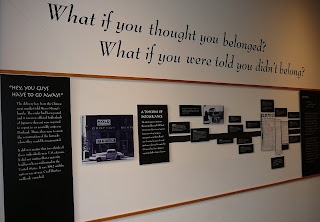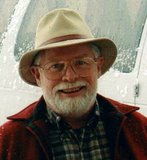OREGON NIKKEI LEGACY CENTER
This week Betty and I visited the Oregon Nikkei Legacy Center for the first time. Japanese American generations each have their own name, but "Nikkei" refers to all the individuals who share Japanese ancestors. Their history in the United States is intriguing, often noble, and extraordinarily courageous at times because of the racial bigotry exercised against them as emigrants, particularly at the outbreak of war with Japan in 1941 because they "looked like the enemy".
Because of the attack on Pearl Harbor the usual prejudice toward the Japanese was magnified into the worst kind of racial profiling against hard working merchants and farmers who were only engaged in enjoying the American dream of "life, liberty, and the pursuit of happiness" as they strived to make a place for themselves in many western communities. Indeed, their industry was often a significant part of the agricultural and labor supply on which the economy was based as it passed through the depression years. Nevertheless, the Japanese in America were unfairly held responsible for the war.
The frantic reaction of the government was to forceably remove everyone of Japanese heritage from the entire west coast of the country for fear they might include enemy agents. As a result 120.000 individuals, many of whom were women and children, were corralled in holding centers until ten "concentration camps" could be constructed in mostly isolated, desert areas for their incarceration. Many of those held were American Citizens whose civil rights were ignored; all of them were treated like prisoners. Only allowed to bring what they could carry (as one placcard in the certer points out) what they really brought and relied upon was "strength, dignity, and soul".
The map locates the ten internment locations where the detainees were held. The colored portion was the west coast zone from which the Japanese were excluded. Virtually all who had lived in those areas suffered the total loss of their properties and personal possessions. Although a few in the camps were allowed to relocate further east, and some students were allowed to continue their education in eastern schools, most detained Japanese remained restrained in the windy, dusty, cold, and inhospitable barracks to which they were assigned within barbed wire fences surrounded by towers and armed guards.
At first the young men were even refused the opportunity to serve in the armed forced in defense of the country. Later 100th Battalion and the the newly formed 442nd Regimental Combat Team were combined and these American-Japanese troops performed heroically time and again in European campaigns, not only proving their loyalty and devotion to America but demonstrating an extrordinary strength of will and character and courage. These soldiers suffered more casualties and won more combat awards that any other unit in the bitter battles of 1944-45. They were truly magnificient.
One more thought: The story of the noble and gentle Japanese who endured the traumas described above with such remarkable grace and dignity should be learned and remembered by all Americans. Efforts like the Oregon Nikkei Legacy Center and the nearby commemorative park of memorial stones should be visited and appreciated and recommended to others. I promise you will be touched by the experience.







2 Comments:
John, have you read Snow Falling on Cedars by David Guterson? It's a favorite of mine and deals with this prejudice. (Plus it takes place in your neck of the woods.)
Yes, Linda, it is a fine book. I am collecting books on this subject and my bibliography list on the subject now extends to fourteen pages. Unfortunately, I cant aford all the books on that list, but I have some wonderful selections which tell this poignant story quite effectively.
Post a Comment
<< Home